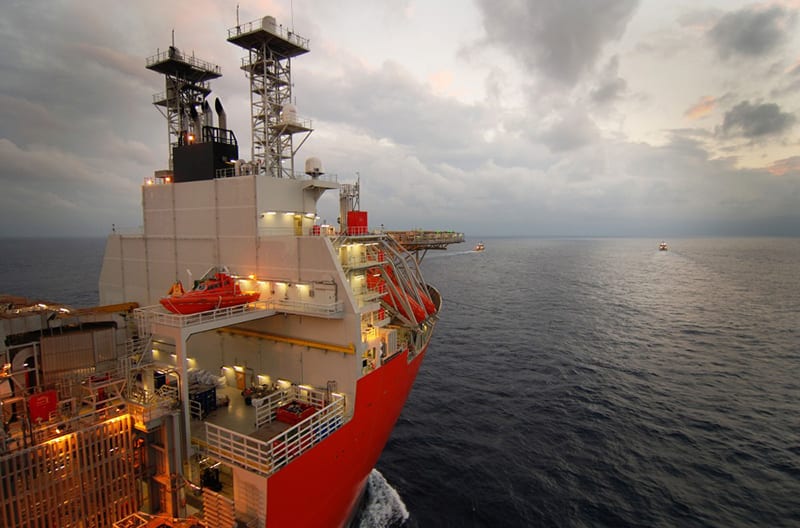Rapid development and production offshore Guyana will see oil production at peak moving from 120,000 barrels of oil per day (bpd) from the Liza Phase 1 project in 2020 to a whopping 520,000 bpd after the Liza Phase 2 and Payara developments come on stream, by 2023.
In the announcement of its 3rd quarter estimated results on Wednesday, Hess Corporation said the 220,000 bpd Liza Phase 2 development is expected to come on stream by 2022 while production will begin at the Payara Field, estimated at 180,000 bpd, as early as 2023. The three phases of production, beginning with Liza 1, will utilize 3 floating production storage and offloading (FPSO) vessels.
Hess has a 30 percent stake in the Stabroek Block, CNOOC Nexen 25 percent and the operator, ExxonMobil affiliate Esso Exploration and Production Guyana Limited holding 45 percent interest.
ExxonMobil announced its ninth discovery on the Block at the Hammerhead-1 exploration well on August 30, which encountered approximately 197 feet of high-quality, oil-bearing sandstone reservoir. The well, located approximately 13 miles southwest of the Liza-1 well, targeted Miocene aged reservoir and proves a new play concept for potential development on the Block.
Hammerhead appraisal could signal good tidings for Eco Atlantic
The Hammerhead discovery adds to the eight previous discoveries that are estimated to contain gross recoverable resources of more than 4 billion boe and have established the potential for up to five FPSO vessels producing over 750,000 gross barrels of oil per day by 2025.
A second exploration vessel, the Noble Tom Madden, will commence drilling at the Pluma prospect, which is located approximately 17 miles south of the Turbot discovery, in November.
Hess reported net income of $52 million, or $0.14 per common share, in the third quarter of 2018, compared to a net loss of $624 million, or $2.02 per common share, in the third quarter of 2017. On an adjusted basis, the Corporation reported net income of $123 million, or $0.38 per common share, in the third quarter of 2018, compared with an adjusted net loss of $324 million, or $1.07 per common share, in the prior-year quarter.
Higher realized crude oil selling prices combined with lower operating costs and depreciation, depletion and amortization expense in the third quarter of 2018 more than offset lower production volumes due to asset sales, compared with the prior-year quarter.
“We achieved another strong quarter, delivering higher production and lower costs than our guidance while keeping capital and exploratory expenditures flat with guidance for the year,” Chief Executive Officer John Hess said. “Our reshaped portfolio is well positioned for a decade plus of capital efficient production growth with increasing cash generation and returns to shareholders.”



